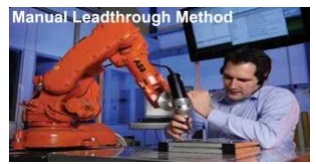Chapter: Mechanical : Robotics : Robot Kinematics And Robot Programming
Types of Robot Programming
Robot Programming
According to the consistent performance by
the robots in industries, the robot programming can be divided in two common
types such as:
·
Leadthrough Programming Method
·
Textual Robot Languages
Lead
through Programming Method:
During
this programming method, the traveling of robots is based on the desired movements, and it is stored in the external
controller memory. There are two modes of a control system in this method such
as a run mode and teach mode. The program is taught in the teach
mode, and it is executed in the run mode. The leadthrough programming method
can be done by two methods namely:
·
Powered Leadthrough Method
·
Manual Leadthrough Method

a) Powered Leadthrough Method:
The powered leadthrough is the common
programming method in the industries. A teach pendant is
incorporated in this method for controlling the motors available in the joints.
It is also used to operate the robot wrist and arm through a sequence of
points. The playback of an operation is
done by
recording these points. The
control of complex geometric moves is difficultto perform in
the teach pendant.
As a result, this
method is good for point
to point movements. Some of the key applications are spot welding,
machine loading & unloading, and part transfer process.
b) Manual Leadthrough Method:
In this method,endeffector theismoved
robot’sphysicallybythe programmer at the desired movements. Sometimes, it may
be difficult to move large robot arm manually. To get rid of it ateach
button is implemented in the wrist for special programming. The manual
leadthrough method is also known as Walk Through method. It is mainly
used to perform continuous path movements. This method is best for spray
painting and arc welding operations.
Textual Robot Languages:
In 1973, WAVE language was developed, and it
is the first textual robot
language as well. It is used to interface the machine vision
system with the robot. Then AL language was introduced in 1974 for
controlling multiple robot arms during arm coordination. VAL was nvented
in 1979, and it is the common textual robot language. Later, this language was
dated in 1984, and called as VAL II. The IBM Corporation has established
their two own languages such as AMLand AUTOPASS, which is used
for the assembly operations.
Other
important textual robot languages are Manufacturing Control Language (MCL),
RAIL, and Automatic Programmed Tooling (APT) languages.
Related Topics